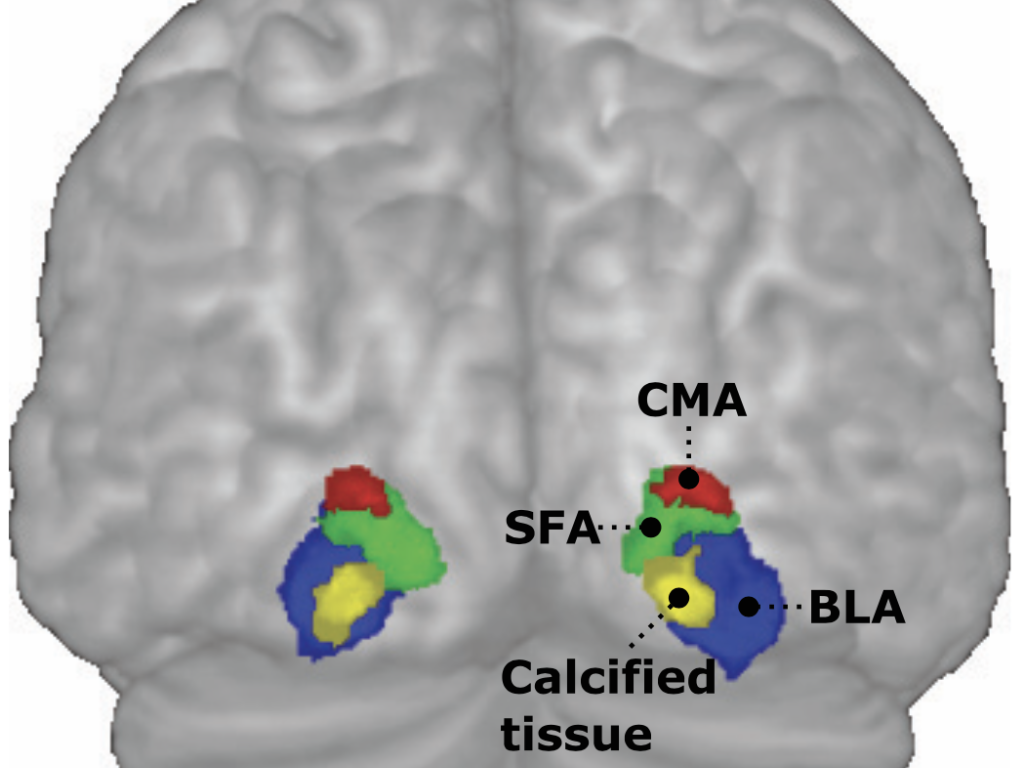The curious case of the trolley problem and the basolateral amygdala

It turns out that age old trolley-problem answers could in fact be used to predict whether the basolateral amygdala in your brain is functioning correctly.
The trolley problem is a philosophical thought experiment made by English philosopher Philippa Foot who, despite not originally coining the phrase, introduced the common version used today back in 1967.
It has sprouted many variations, often to test different biases held by the subject, but the standard version goes something like this: you are in a trolley with dodgy brakes headed towards five people who will almost certainly be killed. However, ahead of them lies a switch in the tracks and you have access to a lever that will divert the trolley to the other track which has one person on it. Do you pull the lever or not?
At the heart of this dilemma is the difference between deontological and utilitarian moral judgements. Utilitarian ethics believe that the result that causes the greatest good for the greatest number of people ought to be favoured, in this case pulling that lever and killing one person to save five. It also equates all human lives as equal. Deontological ethics argue that regardless of outcome an action is inherently wrong or right, and thus pulling the lever is murder even if it results in a net saving of life.
Rodent research has determined that the central-medial amygdala subserves ‘habitual or action-based behaviour’, i.e., that favoured in deontological moral judgements, while the basolateral amygdala is critical for ‘goal-directed or outcome-based behaviour, i.e., utilitarian moral judgements.
However, until now we had no idea if the same brain regions do the same thing in humans! Enter the hot of the presses study by Van Honk & Terburg et al (July 2022) entitled ‘Breakdown of utilitarian moral judgement after basolateral amygdala damage’ and published in the Proceedings of the National Academy of Sciences. These Neuroscience Institute researchers have for the first time shown that the basolateral amygdala is intrinsic to utilitarian moral reasoning.
The key to showing this so elegantly is their sample selection. They found five subjects with the incredibly rare, autosomal recessive Urbach-Wiethe disease (UWD) in which, amongst other symptoms, there is bilateral calcification of the basolateral amygdala. This results in an effective silencing of the basolateral amygdala and allows for the testing of its specific functioning. They also had 11 healthy control subjects who were matched to the UWD participants in aged, IQ, socioeconomic status, ethnicity, and religion.

Each participant’s brain was scanned, to show the extent of the basolateral amygdala damage (calcification) or lack thereof. Then participants were presented with a set of questions falling within one of the three scenario categories: non-moral scenarios, which involve decisions without moral judgements; impersonal moral scenarios, which involved moral judgement that require indirect or non-physical actions toward the victim; or personal moral scenarios, which involve moral judgements that require direct and physical interaction with the victim.
Their answers revealed a significant bias toward deontological moral judgements in the UWD participants while the healthy controls mostly favoured utilitarian moral judgements (create the most good for the most people). When interviewed afterwards about their answers to the trolley car scenario the researchers asked if they understood the consequence of their decision and why they made the decision to sacrifice a life or not. All subjects, UWD and healthy controls said they understood the consequences of their decision, but the healthy controls still felt that sacrificing one life to save five was justifiable. The UWD participants, however, did not and would rather let the five people die than intervene. They ‘could not make the sacrificial decision because it was distressing, upsetting or painful.’
One might imagine how the use of utilitarian moral judgement is useful for the survival of our species. How the ability to make a decision, even an exceptionally painful one, to ensure more survival is evolutionarily favoured. Whether the evolution of the basolateral amygdala then suggests that utilitarian ethics are ultimately superior is a question we will leave to the reader.
One thing is certain and that is that one needs an intact basolateral amygdala in order to make sacrificial moral judgements. I guess the old adage is true: End one life to save a thousand? Not without a basolateral amygdala you don’t.
The paper can be found here
